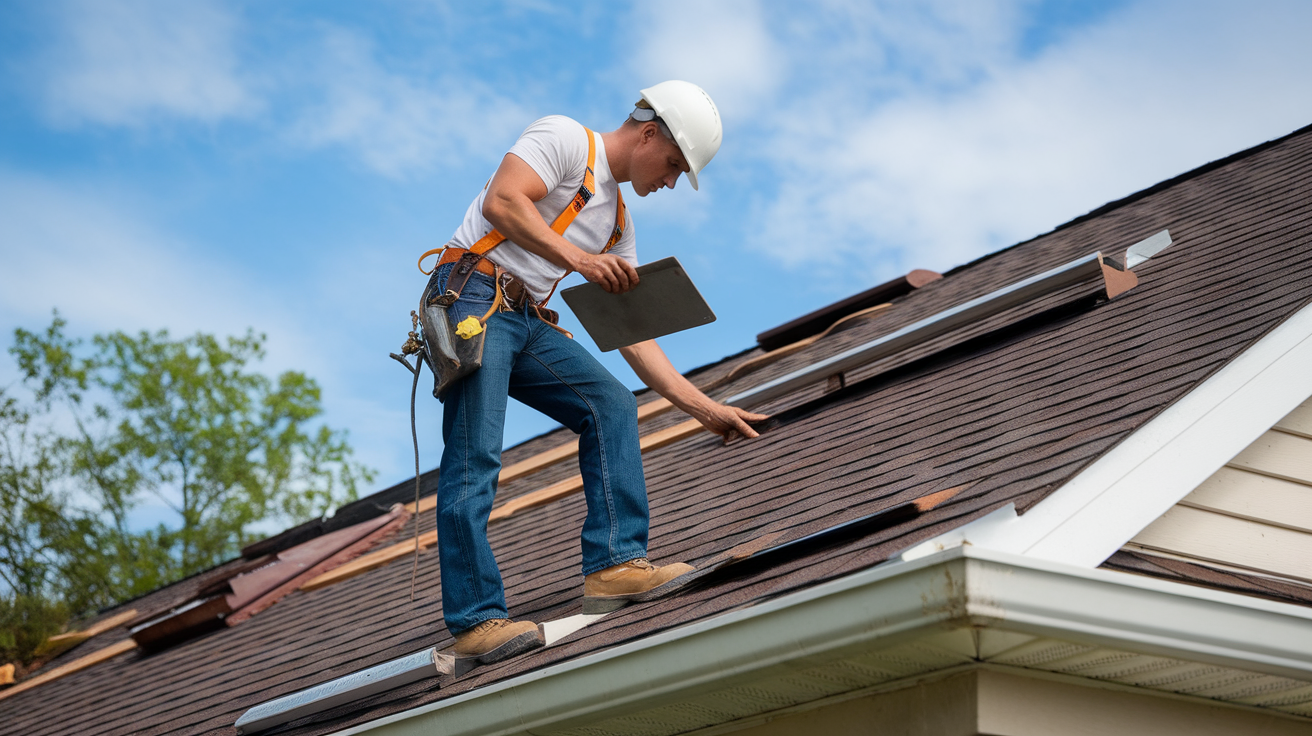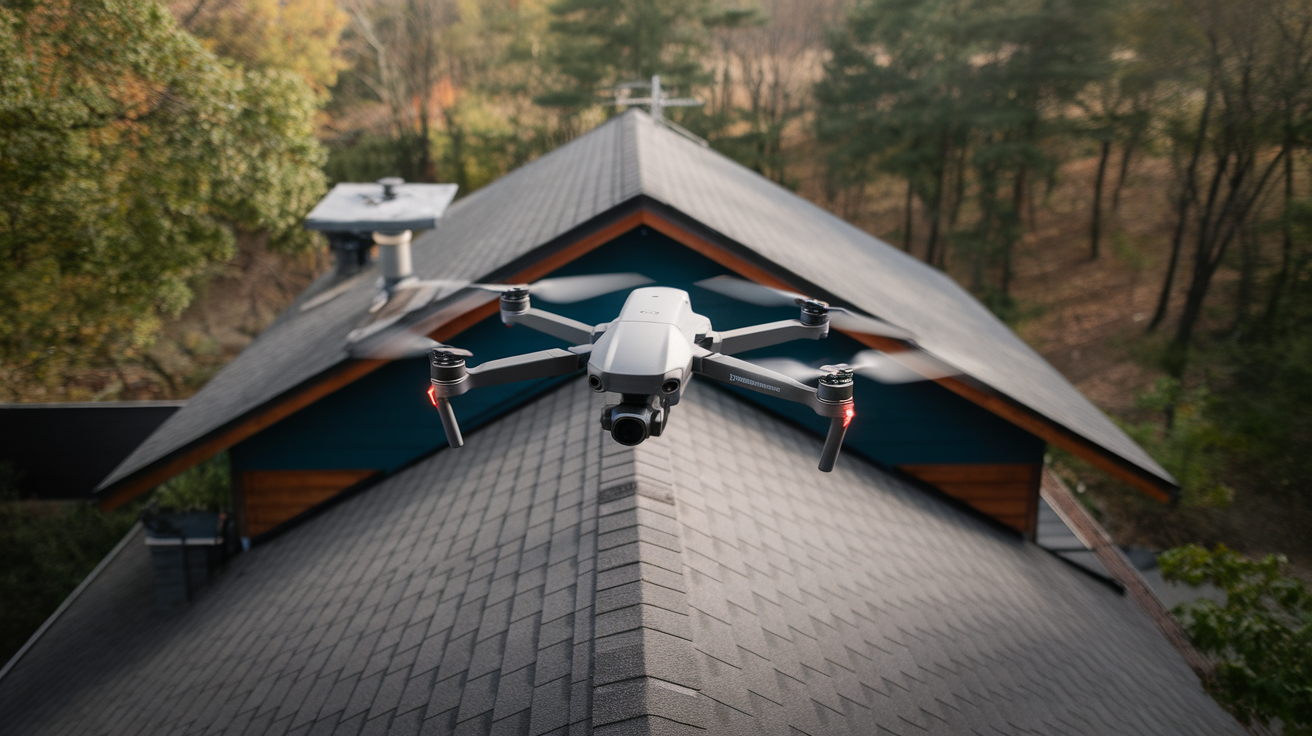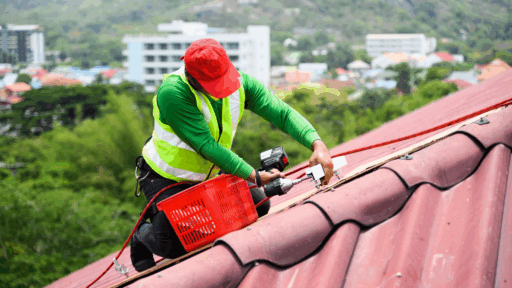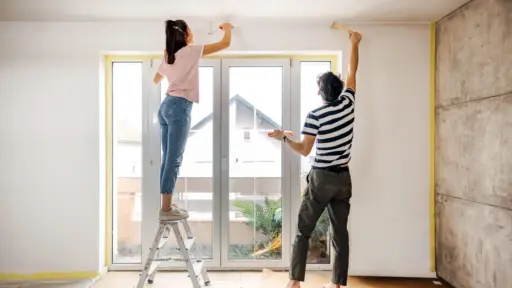When I first thought about getting my roof inspected, I had no idea what it might cost. I just knew it was something homeowners should do.
A roof inspection helps find problems early, like leaks, damage, or wear, before they turn into expensive repairs. It’s a smart step, whether you’re buying a home, selling one, or just trying to keep your roof in good shape.
The cost can vary depending on where you live, the size of your roof, and the type of inspection you choose.
Some are free with a roofing service, while others might charge a fee for a full report or special tools like drones or infrared.
In this post, I’ll walk you through the typical costs, what’s included, and what to expect so you can feel confident and prepared when it’s time to schedule your own roof inspection.
Average Roof Inspection Costs

When I scheduled my first roof inspection, I had no idea what the cost would be. I just wanted to make sure nothing was leaking or falling apart. Sound familiar?
Most homeowners I speak with expect a flat fee. However, the truth is that roof inspection costs can vary significantly.
On average, you’re looking at about $220. However, the cost of the inspection can vary depending on the type of inspection required, ranging from as low as $75 to as high as $600.
| Type of Roof Inspection | Estimated Cost Range |
|---|---|
| Basic Visual Check | $75 – $150 |
| Drone Inspection | $150 – $400 |
| Infrared Thermal Scan | $400 – $600 |
| Roof Certification Report | $75 – $200 |
Here’s what I’ve learned:
- The size of your roof matters. A bigger roof takes longer to inspect.
- Steep or complex roofs cost more. If access is difficult, expect to pay an additional fee.
- Your location plays a role. City prices can be higher than those in rural areas.
- The inspection method changes everything. A drone or thermal camera will raise the price.
You’re not just paying for someone to glance at your shingles. You’re paying for a trained eye, the right tools, and a clear report you can trust. If you’re going to invest in your home, this is a smart place to start.
Types of Roof Inspections
Not all roof inspections are the same. I didn’t know that at first. I thought someone just climbed up, looked around, and left me a note. It turns out that there are different ways to inspect a roof, and the price changes with each one.
1. Physical (On-Site) Inspection

This is the old-school method. A pro climbs onto your roof, checks the shingles, flashing, vents, and anything else that stands out.
Cost: Usually $75 to $200.
Good for:
- Basic checkups
- Real estate deals
- Regular maintenance
I like this option when the roof is easy to access and you want a clear yes or no “Is my roof okay?”
2. Drone Inspection

Some roofs are hard to reach. Or maybe yours is too steep. That’s where drones come in. They take high-res pictures and videos without anyone having to climb.
Cost: Around $150 to $400.
Good for:
- Dangerous or tall roofs
- Detailed visuals
- Faster turnarounds
If you’re like me and worry about someone getting hurt on your roof, this is a safer, smarter choice.
3. Infrared (Thermal) Inspection

This one’s high-tech. It uses a thermal camera to find problems you can’t see, like water under the surface or hidden insulation gaps.
Cost: Typically $400 to $600.
Good for:
- Leaks you can’t find
- Moisture behind walls
- Energy loss issues
This inspection sees what our eyes can’t. It’s pricey, but if you’re chasing a mystery leak, it might be the best investment.
So, which one do you need? It depends on your roof and your peace of mind. I always say: go with what gives you answers. Not just a number on paper.
Factors Influencing Roof Inspection Costs
When I booked my first roof inspection, the price surprised me. It wasn’t a single flat rate; many small factors contributed to the final bill. Let me share what I learned so that you won’t be caught off guard.
- Roof Size and Complexity: This one’s simple: big roofs cost more. Complex designs with steep slopes or multiple levels add to the effort and the price tag. The harder the job, the higher your quote.
- Roof Material: Different materials need different checks. A roof made of slate or metal might require special skills or equipment. If your roof isn’t made of typical shingles, expect inspectors to adjust the price accordingly.
- Accessibility: If your roof is tough to reach, expect to pay more. Tight spaces, steep angles, or trees nearby all raise the difficulty. And when inspectors face more risk, they charge accordingly.
- Geographic Location: Prices vary depending on your location. Inspections in cities often cost more because labor rates are higher in these areas. Rural areas might save you some money, but fewer inspectors may mean less competition and higher fees.
- Seasonal Demand: I hadn’t initially considered it. Roof inspections tend to be more expensive during busy seasons, such as immediately after a major storm has passed. When everyone’s booking at once, inspectors raise their prices.
Knowing these details helps you budget better. You’ll understand why your quote might differ from your neighbor’s, and you won’t feel blindsided.
What’s Included in a Roof Inspection?
When I first scheduled my roof inspection, I wasn’t exactly sure what I’d get. Is it just someone climbing up a ladder and looking around? Or is there more to it? Turns out, a good roof inspection covers more than you might think.
1. Exterior Examination
First things first, inspectors look at the outside. They’ll inspect your shingles carefully, ensuring none are loose, cracked, or missing.
They’ll examine flashing, the metal strips around chimneys and vents, to see if they’re sealed tightly.
Gutters and downspouts? Yep, they’ll look at those too.
Clogged or damaged gutters can cause serious issues, so this matters more than you’d think.
2. Interior Inspection
Next, your inspector will step inside, usually into the attic. They’ll hunt for hidden leaks, moisture, or stains that could signal bigger problems.
They’ll also check your insulation and ventilation. Poor insulation can result in higher heating and cooling bills.
Bad ventilation can lead to mold and roof damage. You might not think the attic matters, but trust me it does.
3. Detailed Report
Once the inspection’s over, you won’t be left guessing. You’ll receive a clear and detailed report that shows exactly what they found.
This isn’t just a quick checklist. It’s a full rundown with photos, notes, and recommendations. You’ll see clearly what’s good, what’s not, and what needs fixing.
This report clarifies your next steps and makes them straightforward. Whether you handle repairs right away or plan them out over time, you’ll know exactly what to do next. A good inspection isn’t guesswork, it’s peace of mind.
When Should You Schedule a Roof Inspection?
I used to think roof inspections were only for major issues, such as leaks or obvious damage. But I learned that regular checks save headaches (and money).
1. Routine Maintenance: Get your roof checked at least once every year or two. It sounds boring, I know. But trust me, it’s better to catch small issues now than pay for big ones later. Routine checks keep you ahead of trouble.
2. After Severe Weather: Storms can happen, and they can damage your roof quickly. After heavy wind, hail, or big rain, don’t wait for signs of damage. Schedule a quick inspection. You’ll sleep better knowing everything’s safe up there.
3. Before Buying or Selling a Home: If you’re about to buy or sell, an inspection is a must. Why? It gives clear proof of your roof’s condition, no guessing games. You’ll know exactly where you stand, and buyers appreciate the honesty.
4. Before Warranty Expiration: One thing most people miss: If your roof’s warranty is about to expire, have it checked. You might find issues covered by the warranty. Waiting too long means paying from your pocket later. Don’t lose out.
5. Additional Costs and Considerations: When I first booked a roof inspection, I thought the quoted price was final. It turns out that sometimes extra things pop up, so it’s smart to know ahead of time. Here’s what might cost extra:
6. Roof Certification: It’s an official report stating that your roof is in good condition. You might need one when selling your home or getting insurance. However, be aware that this certification can add $75 to $200 to your bill.
7. Minor Repairs: Sometimes, the inspector identifies small issues that can be addressed immediately. Things like loose shingles or minor leaks. These repairs usually aren’t free.
8. Follow-Up Inspections: If your first inspection reveals serious issues, expect a follow-up inspection. A follow-up inspection checks that repairs were done right.
Tips for Homeowners
When I first hired a roof inspector, I wasn’t sure where to begin. Here’s what I learned to make it easier for you:
- Hire qualified inspectors: Check their license and experience. You deserve someone who knows their stuff.
- Get multiple quotes: Always compare costs and services; it helps you spot fair deals.
- Understand your inspection report: Ask questions, clarify findings, and act wisely on the recommendations.
Follow these three steps, and your roof inspection will proceed smoothly.
Conclusion
At first, I didn’t see the point in regular roof inspections – but after dealing with a surprise leak, I changed my mind fast. A simple check could have saved me time, stress, and money.
Now, I get my roof inspected regularly, and it’s made a huge difference. I feel more confident knowing my home is protected, especially during storm season.
Even if your roof looks fine from the ground, there could be hidden issues. Cracked shingles, blocked gutters, or small leaks often go unnoticed until they cause real damage. That’s why I believe it’s better to be safe than sorry.
A quick inspection now can prevent big repairs later if you’re like me and want to protect your home and your budget. Don’t wait. It’s a smart move that brings real peace of mind. Go ahead and schedule that roof inspection today.








